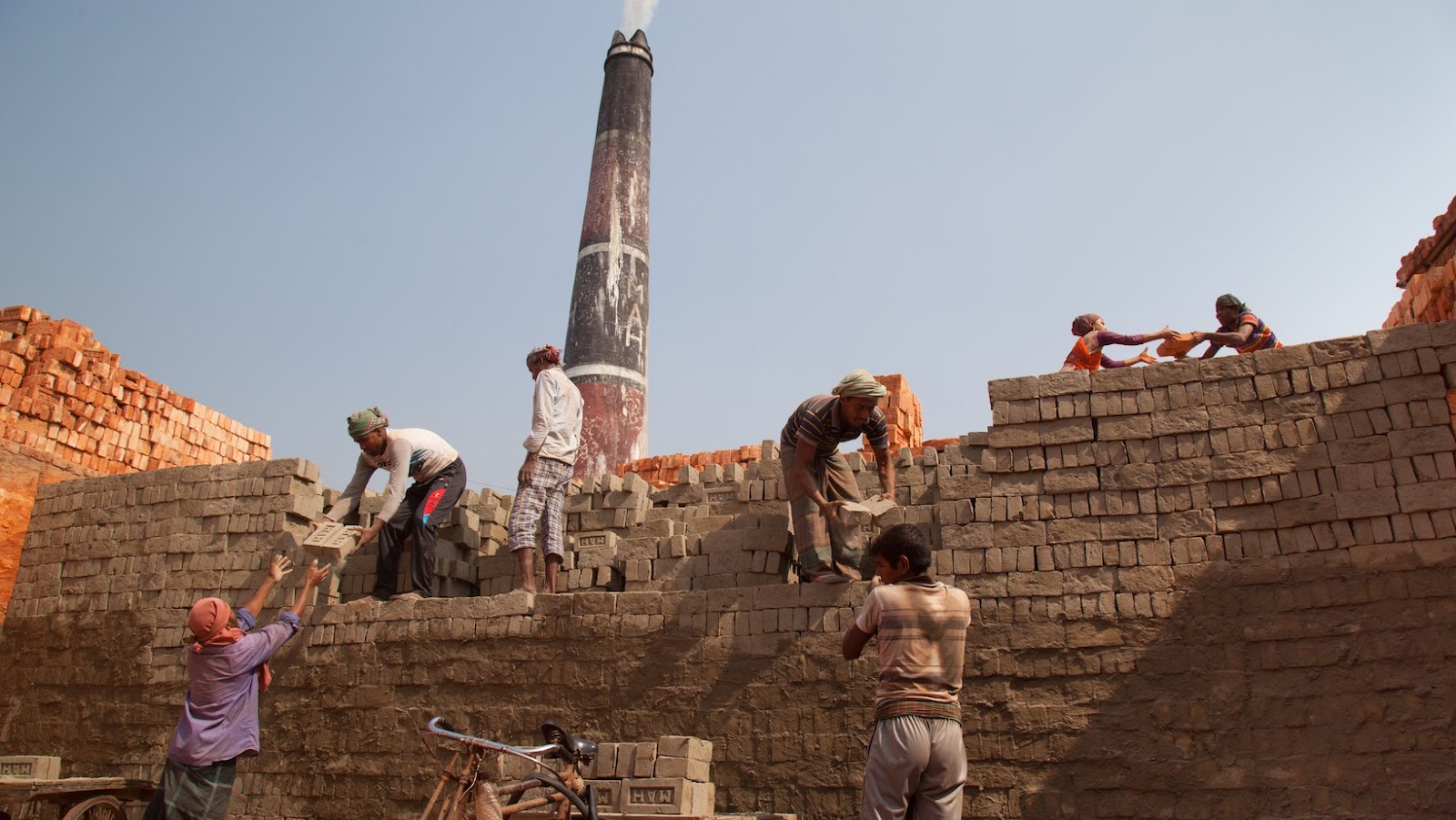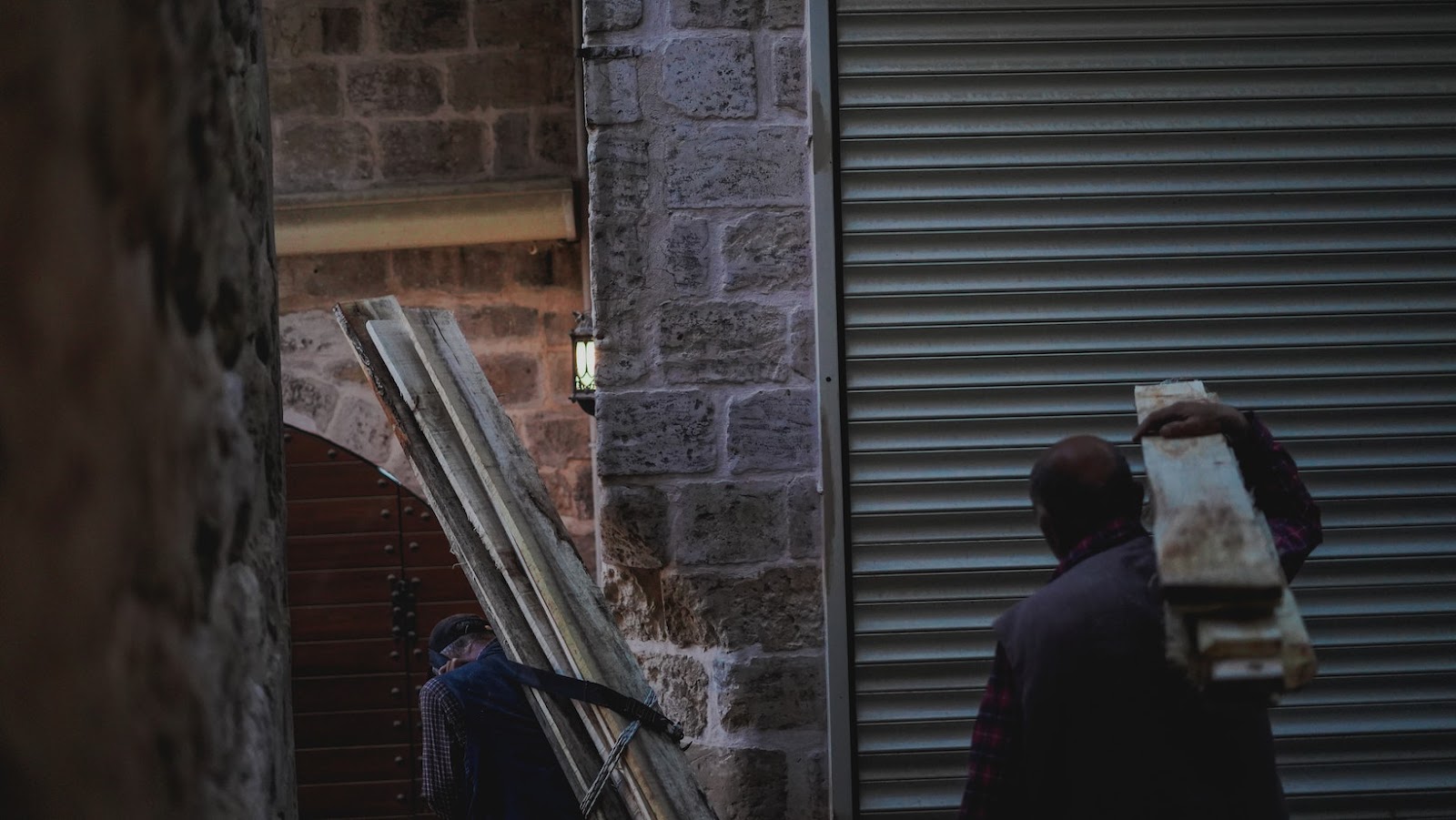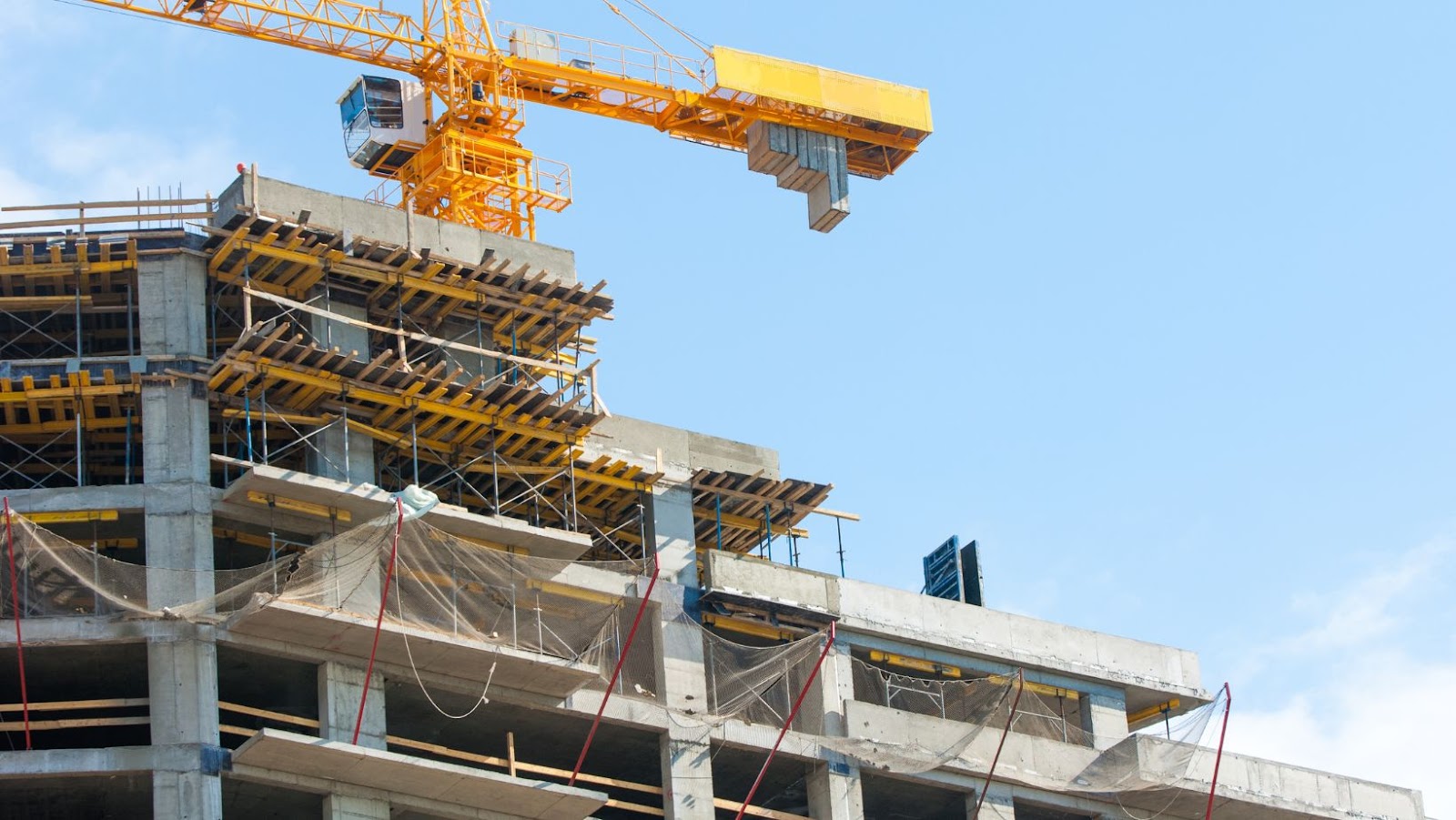When deciding to construct a brick shop, it is important to consider the types of building constructions available. There are a variety of different types of constructions available suitable for brick shop construction. From cinder block construction to steel-framed construction and timber-framed construction, each type of building construction offers different benefits and comes with its own unique set of challenges.
Let’s take a look at some of the types of building constructions available for brick shop construction.
What Type of Building Construction is a Brick Shop
Brick shops are commercial buildings made predominantly from bricks. These buildings can house a variety of businesses, including retail stores, restaurants, and offices.
There are different types of building constructions for brick shops:
- Load bearing construction: In this type of construction, the walls support the building’s weight, eliminating the need for a separate structural framework.
- Reinforced masonry construction: It involves the use of steel reinforcement bars within the brick walls to enhance the building’s strength.
- Steel frame construction with brick facade: In this type of construction, the building’s frame is made of steel, and bricks are used for the exterior walls.
When constructing a brick shop, it is important to hire professionals with experience in this type of building. The process involves careful planning, site preparation, foundation laying, bricklaying, roofing, and finishing. Proper construction ensures the durability and safety of the building for years to come.
Pro tip: It is important to consider factors like traffic flow, parking, and accessibility when designing a brick shop for your business.
Benefits of Using Brick for Building Construction
Brick is a popular building material and has many benefits that make it an excellent option for construction. Brick buildings are durable, energy-efficient, and sustainable, making them an ideal choice for many types of buildings, including brick shops.
Here are some benefits of using brick for building construction:
- Durability: Brick buildings are sturdy and can last for decades or even centuries with proper maintenance. They are also resistant to fire, pests, and weather damage.
- Energy Efficiency: Brick is a good insulator, which means that it can help regulate indoor temperature and reduce energy usage. This can result in lower heating and cooling costs over time.
- Sustainability: Brick is a natural and recyclable material, which makes it an environmentally friendly choice. It can also help reduce carbon emissions by trapping carbon dioxide during the manufacturing process.

Brick shops can be constructed using various types of building constructions, including load-bearing and cavity wall constructions. However, the type of construction will depend on the specific needs of the building and the local building codes and regulations.
Pro Tip: Consider using reclaimed or recycled bricks for your construction project to reduce waste and help lower your carbon footprint.
Comparison With Other Building Materials
Brick shops are a popular building construction, and comparing it to other building materials can help you make an informed decision. Here’s how a brick shop compares with other building materials:
- Wood: Wood is cheaper and easier to work with than bricks, but it is less durable and resistant to fire and weather damage.
- Concrete: Concrete is more durable and fire-resistant than wood, but it is not as attractive as a brick and requires more maintenance.
- Steel: Steel is strong and durable but is more expensive than bricks and can be difficult to work with.
Overall, brick shops are an affordable, durable, and low-maintenance option for building constructions.
Pro tip: Consider your budget, climate, and aesthetic preferences when choosing the right building material for your project.
Planning for the Brick Shop Construction
Constructing a brick shop requires careful planning and consideration of many factors such as local building codes, occupancy and zoning requirements, ventilation, and the desired aesthetic. Planning ahead and understanding the requirements necessary for such a building construction project should be one of the first steps. This article will provide an overview of the steps involved in the planning process of constructing a brick shop.
Site Selection
Site selection is a crucial step in planning for the construction of a brick shop. When selecting a site, you must consider various factors that will impact the success of your business.
Here are some key factors to consider when choosing a site for your brick shop:
- Location: Your site should be in a high-traffic area with easy access to transportation and parking. A busy commercial area will help attract customers and boost sales.
- Zoning requirements: Ensure that the site is zoned for commercial use and that the intended type of brick shop falls under permitted use in the zoning laws of that area. Check the setback requirements, parking regulations, floor area ratio, etc. rather than just focusing on the land’s cost.
- Utilities: Check for the availability of the necessary utilities like water, electricity, and sewage systems. Availability of these services can impact the expenses on the construction required to provide these services.
- Competition: Are there other similar types of businesses like a brick shop already established in that area? A presence of competitors should be viewed as an opportunity rather than a threat.
Pro tip: Create a checklist of all the factors that might impact your brick shop’s success and evaluate each potential site against the checklist to make an informed decision.
Permits and Zoning Requirements
Before starting the construction of a brick shop, it is crucial to research and obtain the necessary permits and comply with the zoning requirements of your local government.
Depending on your location, some of the permits you may need to acquire include:
- Building permits
- Electrical permits
- Plumbing permits
- Fire safety permits
Additionally, ensure that your proposed brick shop construction adheres to the zoning regulations, which vary from one region to another. Regulations include height restrictions, land usage, and parking space requirements. To avoid future legal troubles or delays during the construction process, go through local zoning laws and obtain all the necessary permits before starting to build your brick shop.
Pro Tip: Consult a local contractor with experience in brick shop construction to assist you in navigating the permit and zoning process.
Architectural Design and Blueprints
Architectural design and blueprints are essential components of the construction process when planning to build a brick shop. Brick is a popular building material, prized for its durability, strength, and aesthetic appeal, and using it in construction requires careful planning and execution.
When designing and creating blueprints for a brick shop, there are key considerations to keep in mind. These include the size and dimensions of the building, the number and arrangement of openings such as doors and windows, the location of load-bearing walls, the placement of fixtures such as electrical outlets and plumbing pipes, and plans for any necessary insulation or weatherproofing. It is crucial to plan for a brick shop’s construction meticulously to ensure that it is sturdy, safe, and meets all local building codes and regulations.
Pro Tip: Work with a professional architect or designer to create detailed blueprints and ensure that your brick shop construction goes smoothly.
Building Foundation and Structure
Building a brick shop requires a strong and secure foundation in order to ensure the safety and longevity of the building. The first step in constructing a brick shop is to determine what type of foundation and structure is needed.

This will depend on the size and weight of the shop, as well as the type of soil and ground conditions that it is to be built on. We will look at the different types of foundations and structures available, as well as the building materials and methods used.
Site Preparation
Before constructing a brick shop, site preparation is crucial for a long-lasting, sturdy structure. The steps for site preparation are as follows:
- Preparation of the Site: Clear the area where the shop is to be constructed, remove all trees, weeds, and bushes, and level the ground using a bulldozer.
- Creating the Foundation: Excavate the foundation according to the size of the shop, then prepare the mixture of concrete, and lay it over the gravel layer.
- Constructing the Walls: Use high-quality bricks to construct the walls of the shop, then mortar the wall using cement that binds the bricks firmly.
- Finishing Touches: After the walls have been built, add any necessary doors and windows to the shop.
Brick shops typically utilise masonry construction in which bricks are used to build the walls. It is one of the most durable types of construction and can withstand natural disasters like storms or earthquakes.
Pro Tip: Always use high-quality materials for your brick shop, and ensure that the foundation and structure are built to code for maximum safety and longevity.
Excavation and Footing
Excavation and footing are two essential steps in constructing a brick shop, which is a type of building construction that uses bricks as the primary building material.
Excavation involves digging up the soil to make way for the foundation of the building. It’s crucial to ensure that the excavation is done correctly to avoid potential issues, such as foundation settlement, that may occur later on. The excavation process also involves determining the depth and size of the footing, which is a crucial element that provides a stable base for the foundation.
Once the excavation is complete, the next step is to install the footing. The footing provides support to the foundation and helps distribute the weight of the building evenly. Footings are typically made of reinforced concrete and are designed to withstand both vertical and lateral loads. Constructing a brick shop requires proper planning and execution of each phase to ensure the building’s foundation and structure are solid and durable. It’s essential to hire experienced professionals for each step of the construction process to ensure the brick shop stands the test of time.
Brick Wall Construction
Brick wall construction is a traditional and popular method for building the foundation and structure of various types of buildings, including brick shops.
Here are the basic steps to follow in constructing a brick shop:
- Prepare the foundation – Dig a trench, pour concrete footing and lay the foundation.
- Construct the walls – Stack the bricks with a layer of mortar between each brick, ensuring the corners are perpendicular.
- Install lintels and frames – add metal lintels for door and window frames to distribute the weight evenly across the brickwork.
- Install roof trusses – The roof trusses should be secured to the high points of the walls.
- Add a roof and finishing touches- Cover with a roof of your preference and add finishes like flooring, plaster and paint.
Brick wall construction provides a durable and long-lasting structure with excellent thermal insulation properties.
Pro tip- Be sure to check brick alignment, use a level and ensure they’re evenly laid.
Roofing and Finishing
Constructing a brick shop is an involved process that requires accurate planning and construction methods. After the basic layout of the brick shop is set, the next step is the installation of the roof and the finishing touches. This process of roofing and finishing involves the installation of the ceiling, insulation, walls, ventilation, windows, doors, and other components. We’ll discuss these two key steps in detail in this section.
Roofing Materials
A brick shop requires a sturdy and durable roofing material that can withstand harsh weather conditions and provide insulation. There are several types of roofing materials that are suitable for a brick shop:
- Asphalt Shingles: This is the most common roofing material used in the United States. It is affordable, easy to install, and comes in a variety of styles and colours. However, it has a shorter lifespan compared to other materials.
- Metal: Metal roofs are durable, fire-resistant, and energy-efficient. They also come in a variety of styles and can last up to 50 years. However, they are more expensive than asphalt shingles.
- Clay Tiles: Clay tiles are long-lasting and can withstand extreme weather conditions. They are also fire-resistant and energy-efficient. However, they are heavier than other roofing materials and require professional installation.
- Wood Shingles: Wood shingles are aesthetically pleasing and provide insulation. However, they require regular maintenance and are susceptible to fire and rot.
- Rubber: Rubber roofs are low-maintenance, affordable, and energy-efficient. They can last up to 50 years and are easy to install. However, they are susceptible to punctures and can be damaged by extreme weather conditions.
It is important to choose a roofing material that fits your budget, style, and climate conditions. Coordinating with your construction team can help narrow down the options suitable for use in your construction work.
Pro tip: Choose a roofing material that is suitable for your brick shop’s climate and can provide ample insulation to maintain a consistent temperature.
Windows and Doors
Windows and doors are crucial components in the construction of a brick shop, providing ventilation and natural light.
To install windows and doors in a brick shop, follow these steps:
- Measure the size of your window or door opening, leaving adequate space for the frame.
- Cut the brick veneer to the appropriate size using a masonry saw or angle grinder.
- Apply a layer of mortar to the top and sides of the brick veneer, ensuring even coverage and a solid bond.
- Carefully place the window or door frame in the opening, confirming that it is level and plumb.
- Secure the frame with screws or bolts, checking again to ensure proper alignment.
- Fill in any remaining gaps with brick veneer and mortar or a foam insulation sealant.
- Remember to install weather-stripping and flashing around the windows and doors to prevent leaks and drafts.
Interior and Exterior Finishing Touches
When constructing a brick shop, it’s essential to consider the interior and exterior finishing touches that will bring your project to life. The following are some tips to help you enhance your brick shop’s appearance and functionality:
Interior finishing touches: Choose a flooring material that complements the brick walls, such as ceramic tiles or hardwood flooring. Install shelves, cabinets, and storage units that match the brick’s colour and texture for a cohesive look. Consider adding lighting fixtures that highlight the natural beauty of the brick while also providing ample illumination.
Exterior finishing touches: Install a high-quality roofing material that complements the brickwork, such as clay tiles or asphalt shingles. Consider adding architectural details, such as cornices and arches, to enhance the brick’s visual appeal. Install energy-efficient windows and doors that complement the brick’s colour and texture while also providing adequate ventilation and natural light.
Pro Tip: When constructing a brick shop, choose a high-quality mortar mix that complements the colour and texture of the bricks for a seamless finish.
Maintenance and Repairs for Brick Shop
Building a brick shop requires a great deal of intricate work. Not only are you constructing the exterior of the shop from bricks, but it also involves reinforcing the structure to make the building stable and long lasting. This section will cover the maintenance and repairs needed for a brick shop to keep it in good condition.
Regular Inspection and Upkeep
If you own or are constructing a brick shop, regular inspection and upkeep are crucial to ensure the long-term stability and safety of the building.
Here are some maintenance and repair tips to follow:
- Inspect the brickwork regularly and look for any signs of damage or wear, including cracks or missing mortar joints.
- Repair any damaged areas immediately to prevent further deterioration and potential structural issues.
- Keep the gutters and drainage system clear of debris to prevent water damage and buildup.
- Monitor the condition of the roof and repair any leaks or damage promptly.
- Inspect the foundation and walls for signs of settling or movement regularly and seek professional help if necessary.
Regular upkeep and preventive maintenance can help prolong the life of your brick shop and prevent costly repairs down the line.
Common Maintenance Issues
A brick shop is a type of building construction that requires proper maintenance and repairs to ensure longevity and safety. Here are some common maintenance issues to look out for:
- Cracks in the bricks or mortar: These are signs of structural damage and require immediate attention to prevent further damage.
- Water damage: Leaks or drainage issues can cause water damage to the bricks, which weakens the structure and promotes mould growth.
- Faded or peeling paint: This not only affects the appearance of the brick shop but can also signal underlying moisture problems that need to be addressed.
- Chimney issues: The chimney is an essential part of a brick shop’s heating and ventilation system, and any issues with it can affect the entire building.
It’s crucial to address these maintenance issues promptly to prevent costly repairs and ensure a safe and comfortable working environment. Pro tip: Schedule regular inspections and maintenance checks to catch any issues early on.
Repairs and Restoration of Brickwork
The construction of brick shops is a popular choice for many businesses, and it is essential to know how to maintain and repair brickwork for long-lasting durability.
Here are some tips for repairing and restoring brickwork:
Inspect your brick shop regularly to identify any signs of cracks, chips, or deterioration. Repair any cracks or chips immediately to prevent further damage. Clean your brickwork regularly with a stiff brush and a solution of warm water and mild detergent. Repoint the brickwork by removing damaged mortar and replacing it with fresh mortar. Apply a coat of water repellent to protect the brickwork from water damage and freeze-thaw cycles.
By following these maintenance and repair tips, you can ensure the longevity and structural integrity of your brick shop.
